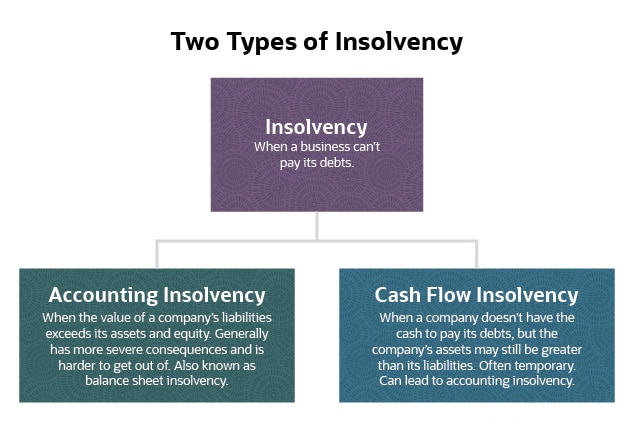Not known Details About Insolvency Practitioner
Not known Details About Insolvency Practitioner
Blog Article
Getting My Insolvency Practitioner To Work
Table of ContentsThe Main Principles Of Insolvency Practitioner Insolvency Practitioner - QuestionsThe smart Trick of Insolvency Practitioner That Nobody is DiscussingExamine This Report on Insolvency PractitionerThe Basic Principles Of Insolvency Practitioner Insolvency Practitioner for DummiesHow Insolvency Practitioner can Save You Time, Stress, and Money.
Insurance policy is checked and regulated by state insurance coverage departments, and among their main purposes is safeguarding insurance holders from the risk of a business in monetary distress. When a firm goes into a period of financial difficulty and is not able to meet its responsibilities, the insurance policy commissioner in the business's home state initiates a processdictated by the legislations of the statewhereby efforts are made to help the company regain its economic ground.If it is established that the firm can not be fixed up, the company is proclaimed financially troubled, and the commissioner will ask the state court to buy the liquidation of the firm. [Back] The insurance coverage commissioner, either selected by the governor or elected, heads the state insurance department and displays and controls insurance coverage activity within the state.
[Back] By getting control of a company, the commissioner (or the insurance coverage division) is, by legislation, the rehabilitator or liquidator of the business. In this ability, the commissioner or division takes control of the company's procedures. As opposed to do so directly, the commissioner might maintain an unique replacement receiver to supervise the company's activities - Insolvency Practitioner.
Insolvency Practitioner Things To Know Before You Get This
The receiver supervises a bookkeeping of the business's possessions and responsibilities and provides the estate of the company. In doing so, the receiver looks for to make best use of the business's possessions, transfer them to cash, and afterwards distribute that cash to lenders having valid insurance claims versus the insurance company based on settlement top priorities specified by state legislation (in all states, insurance holders are priority plaintiffs whose claims are paid before those of basic lenders).
All insurance policy business (with restricted exemptions) accredited to market life or medical insurance or annuities in a state have to be participants of that state's guaranty association. The warranty association accepts the commissioner and the receiver in pre-liquidation planning. Once the liquidation is ordered, the warranty association offers coverage to the firm's insurance policy holders that are state residents (approximately the levels defined by state lawssee listed below; any benefit quantities above the guaranty asociation benefit degrees come to be cases versus the company's staying assets).
Insolvency Practitioner for Dummies
The above coverage degrees use independently for every financially troubled insurer. [Back] When an insurance provider stops working and there is a shortfall of funds required to meet the obligations to insurance holders, state guaranty associations are triggered. Guaranty associations have 2 main sources of funding when offering coverage to insurance holders. Warranty organizations have subrogation civil liberties to an in proportion share of the properties continuing to be in the stopped working insurance company.
Second, insurers doing service in that state are examined a share of the quantity needed to meet the part of the guaranty associations' covered insurance claims not or else funded with estate assets. The amount insurance firms are examined is based upon the amount of premiums that they gather in that state. [Back] The National Company of Life and Medical Insurance Warranty Organizations (NOLHGA) is made up of the life and wellness insurance warranty organizations of all 50 states and the District of Columbia.
NOLHGA develops a job pressure of representative guaranty organizations to collaborate with the insurance commissioner to develop a plan to safeguard policyholders. For more information on NOLHGA's role in the process, see "What Is NOLHGA?" and "The Safeguard at the workplace." [Back]
Insolvency Practitioner Things To Know Before You Get This

Anticipating security by helping you pick the appropriate consumers and the best markets to avoid bad financial obligation to begin with, many thanks to severe financial evaluation. Comprehensive market knowledge, giving you with 360-degree exposure on business industries and putting at risk difficulties. It would be a simplification to assume a profession debt insurance coverage starts and finishes with costs and pay-outs.

The Ultimate Guide To Insolvency Practitioner
It can result in job losses, possession sales, and even bankruptcy. It is essential to recognize exactly how business insolvency works and how it can impact your company. Why does a company participate in bankruptcy? There are a variety of factors why a company might enter into insolvency. The most common reason is that the company is incapable to pay its financial my blog obligations as they fall due.
Various other reasons for bankruptcy include fraud, mismanagement, and unexpected more tips here prices. When a business becomes financially troubled, its possessions are utilized to pay off its financial obligations. This can have a major effect on business, as it may no much longer have the ability to proceed running. Insolvency can likewise bring about work losses and the closure of organizations.
Top Guidelines Of Insolvency Practitioner
The firm might be compelled to market possessions, lay off personnel or even shut down. Creditors may be left out of pocket and the firm's investors might see their financial investment go away.
This can take place for a variety of factors, consisting of bad monetary monitoring, unanticipated expenses, or a change in the market. If a firm is insolvent, it might be compelled to shut down or liquidate properties to pay lenders. This can have a major effect on the organization, employees, and investors.
It can result in work losses, asset sales, and even personal bankruptcy. It is important to comprehend just how company insolvency jobs and exactly how it can influence your organization. Why does a firm participate in bankruptcy? There are a variety of reasons why a company might get in into insolvency. The most typical factor is that the firm is incapable to pay its debts as they fall due.
Insolvency Practitioner - An Overview
Other factors for insolvency consist of fraudulence, mismanagement, and unexpected prices. Insolvency can additionally lead to work losses and the closure of companies.
The firm might be forced to sell assets, lay off personnel or also shut down. Creditors might be check over here left out of pocket and the firm's shareholders might see their financial investment go away.
Report this page